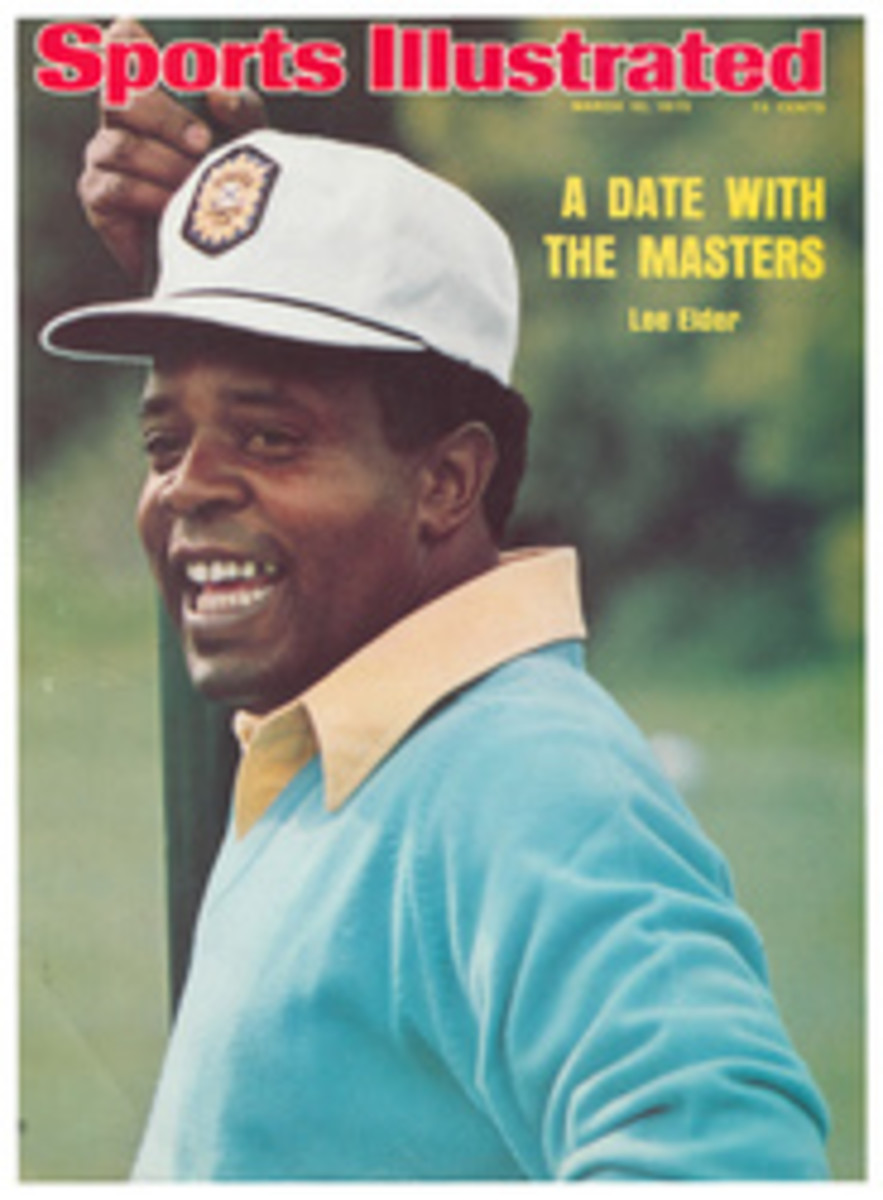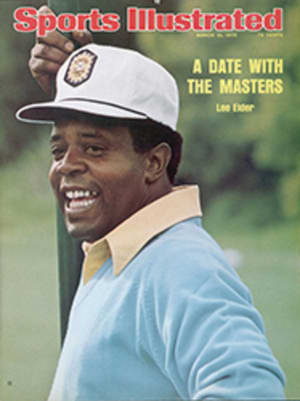
SCORECARD
FAULT!
Ever since Jimmy Connors earned tennis' top ranking, he has found it convenient to take "sick" whenever it suits his fancy, and too often tournament directors have kowtowed to him. At Forest Hills, for example, he was permitted to have a day's extra rest to recover before the tournament began. Then in December, his tooth problems, which were real enough, became near fatal just before the Grand Prix final, which he wanted to avoid.
Two weeks ago at a tournament in Florida, both Connors and his buddy Ilie Nastase were stricken at the same time, conveniently for Connors on a day when old flame Chris Evert dropped by to socialize. The schedule was hastily changed to let Sir James recuperate. Last week at a tournament in Ridgefield, Conn., a veritable epidemic swept through town—perhaps the other players saw what being sick could do for them. Without any warning, Connors and Nastase turned wan and feeble, and were joined in their death throes by Vitas Gerulaitis.
It is possible, though not probable, that for the players at the top, exhibitions and heavyweight bouts of the sort that will pit Connors against John Newcombe in Las Vegas on April 26 are the wave of the future. However, this does not free them from their present commitments. Ticket buyers and sponsors on the Independent Players Association tour are getting as ill as the phainting phantoms, with better reason.
AW, COME ON GUYS
After studying tapes of the Super Bowl telecast, Communications Professor Dr. Michael Real of the University of California at San Diego announced that about 3% of the four-hour show covered actual play, 39% commentary and entertainment, 22% game commentary, 21% pre- and post-game coverage and 15% commercials. He added, in the arcane way that got to Pittsburgh's Joe Greene (S.I., Feb. 17): "In the classical manner of mythical beliefs and ritual activities, the Super Bowl is a communal celebration of an indoctrination into specific specially dominant emotions, life styles and values."
We are not sure what that means, but Dr. Real is a model of brevity and incisiveness next to a French gym teacher, Jean-Marie Brohm, dug up by the London Sunday Times. Said J-M: "Sport is an armoured apparatus for coercion, an instrument of bourgeois hegemony in the Gramscian sense dominated by a phallocratic and fascistoid ideology of virility. It is mechanization of the body conceived as a robot ruled by the principle of productivity!"
UPDATE ON GOD'S LITTLE ACRE
Those intrepid agronomists from Purdue who reinvented grass (SCORECARD, July 22, 1974) are back after a season of watching it grow on the floor of Ross-Ade Stadium. Their report is sanguine. To refresh your memories, Professor William H. Daniel and Mel Robey, superintendent of athletic facilities, have a system for growing grass that they call PAT (for Prescription Athletic Turf). It employs a plastic sheet, drainage pipes, suction pumps, sand, an electric heating blanket and Warren's A-20 bluegrass, and it is their answer to the artificial rug.
This past fall the PAT of Purdue survived eight football games, long practices and a 350-member All American Marching Band without visible wear. Despite heavy downpours that ended shortly before two of the games, the field was dry, the footing firm. Never were more than three or four divots dug out of the turf.
Except for fertilizer and the electric bill, the only maintenance costs were for mowing. Visiting coaches, Robey says, liked the flat surface—with the drainage network, no crown is required, as on all other fields—the players liked its softness and the fact that it did not burn when they skidded on their elbows. It also did not develop the intense heat that rugs do on steamy days. Nobody seemed to think it had any effect on injury rates one way or the other.
PAT has been installed at four colleges, including Mississippi State, and two high schools, but its developers think it would best suit stadiums where pro teams play so the field can get periodic rest. Unlike the other spread, PAT cannot take a steady, year-around beating. RFK in Washington, Mile High in Denver and the New Jersey Sports Authority are showing interest.
DOWN, BOA
Captain is one of your standard fun-loving 17-foot-long pythons who can take anything except being constricted. One day not long ago he was riding in a barrel in the back seat of a car on the highway between Bakersfield and Porterfield, Calif., when he decided that there was nothing that would delight him more than joining his keeper, Al Robbins, up front. He slithered out of the barrel and nuzzled Robbins' neck.
A herpetologist who travels around California producing educational shows at schools, Robbins ordinarily can live with such shows of affection, but he was carrying cages of other snakes, some of them rattlers, and realized it would be too much of a good thing if Captain somehow released the rascals. He stopped the car and tried to wrestle his 120-pound admirer back into the barrel. No go. Some motorists stopped, but instead of coming to Robbins' aid, dashed off when they saw what the problem was.
It was then that Robbins had his bright idea about how to get help. He jumped into the car and gunned it. He was up to 75 mph and fending off Captain's amorous squeezes when the expected happened. A highway patrolman pulled him over. But when he saw what was going on he did what any sensible cop would do—hastily scrawled a ticket and vamoosed. Robbins finally got Captain put away with the assistance of students at the school he was visiting.
After his lecture Robbins and Captain had their day in court. When Judge Richard Thompson of Porterville got a glimpse of Captain he said quickly, "That's evidence enough. Case dismissed."
FIZZ ED
Lynyard Skynyrd, the hot rock group, got its name from Leonard Skinner, former physical education instructor at a Jacksonville (Fla.) high school. When the long-haired musicians entered his class, he chased them off to the dean.
If Skinner ever wants another job in athletics, he might look into the Kansas State High School Activities Association. Couple of soul mates there. After Genesco High ended the basketball season unbeaten in conference play, a booster took a bottle of champagne—!—to the locker room and the principal and a member of the local school board knew all about it! The booster poured the contents over the coaches' heads! Coming down hard, the association fined Genesco $500 and put the school on probation for three years. What would have happened if anybody had drunk the stuff?
OF BASSING FANCY
More of this country's 60-or-so million freshwater anglers fish for bass than for any other species, yet until a few weeks ago, when some of the most serious of them met in Tulsa, there had never been a national symposium to review the management and conservation of bass. Considering a few of the revelations of the attending scientists—including a Florida biologist named Gray Bass,—it was high time they did.
Dr. John Ramsey of Alabama announced that in addition to the six known species of bass—largemouth and smallmouth, spotted, Guadalupe, redeye and Suwannee—there was a seventh, the shoal, found in Florida's Appalachicola River system.
A number of the biologists discussed the spaghettilike protuberances from the small intestine of the Florida largemouth, which are called pyloric caeca and are believed to have a protein-absorbing function. Northern largemouth have fewer tips on their caeca. Does this account for the larger size of the Florida strain? It remains to be seen.
But the most exciting, or frightening, news came from Dr. William Childers of Illinois. He succeeded where all others previously had failed, in interbreeding largemouth and smallmouth bass, albeit under laboratory conditions. He raised three generations of the fish in ponds and reports they were fighters. They attacked and bit swimmers and were positively brutal to one woman who happened to be wearing a brightly flowered bathing suit. Leaping out of the water to strike her in the head and chest, they finally knocked her down and chased her from the pond. Childers promises caution. The attacks are no joke, and "backcrossing," he said, "could cause genetic damage to either species."
RECRUITING BLUES
In the recruitment of college athletes, there always seem to be two sides to the question. Several excellent examples surfaced recently.
Last fall, Barry Switzer, whose Oklahoma football team was on probation for recruiting violations, suggested that coaches be required to take lie-detector tests. He said he and his assistants would be glad to do so. Texas Coach Darrell Royal, who not long ago told reporters that the cheating in college football was "worse than I've ever seen it," thought Switzer's idea excellent. So did the Southwest Conference—of which Texas is a member but Oklahoma is not—and it introduced a polygraph rule requiring athletes, their parents, coaches and alumni to submit to lie tests when a recruiting violation was suspected. The result: in Texas, where football players are considered the next-greatest natural resource to oil, Oklahoma outrecruited all SWC teams. The Sooners, who in 1974 listed 38 Texans on their roster, signed 16 more, a majority of them on the most-wanted list. There is a strong move now in the SWC to abolish the new polygraph rule.
Greg Murphy, who claims to have received 132 offers as a high school linebacker in Brooklyn, winnowed the number to 30, then signed letters of intent with USC, Michigan and Notre Dame—and enrolled at Penn State. Michigan's Bo Schembechler cursed him out, Murphy says, and "Ara Parseghian told me it was things like this that caused him to lose faith in the younger generation."
No doubt they do, but there are plenty of parents whose sons have been pursued through the cellar and out the attic window, who wonder if the coaches aren't to blame. The pressure they put on the athletes could scramble anybody's mind. Take Russell Davis III of Woodbridge, Va. He scored 26 touchdowns last season and rushed for 2,021 yards, but that isn't the half of it. A 6'2", 215-pounder, he high-jumped 6'9", ran the 100 in 9.9 and was all-regional in basketball. While coaches slavered and Davis reduced his choices to USC, Michigan, Alabama, Tennessee, Maryland, North Carolina and Georgia Tech, Davis' family spent a frantic year answering phone and door bells. "It was hell," reported his father after Davis chose Michigan. "We lived like a telephone company, not a home." Said his mother: "It is not an experience I would wish on anyone."
The sentiments, precisely, of Mrs. Sadie Sims, grandmother and guardian of Billy Sims, the Texan everybody wanted most. Oklahoma, for sure, got him, but Mrs. Sims is not sure what the school got. "He's on the verge of a nervous breakdown," she said. "Those coaches just wouldn't leave him alone. They have pressured him to the point he would give up football in a minute."
ILLUSTRATION
THEY SAID IT
•Ticky Burden, Utah guard, asked what he would do with all the money he might get from professional basketball: "Live in it, drive it, wear it and eat it."
•John McKay, on confidence: "When I was duck hunting with Bear Bryant, he shot at one but it kept flying. 'John,' he said, 'there flies a dead duck.' That's confidence."
•Thorn Clifford, University of Florida running back who did not play much, accepting a trophy for the highest academic record on the team: "I'm especially grateful to Coach Dickey for giving me so much time to study during the games."
•Brenda Savage, member of the LeSueur (Minn.) High School basketball team: "We tried saying chick-to-chick instead of man-to-man, but it just didn't work."
•Jack Schulte, Arkansas basketball center, asked why he avoided a fight with an opponent: "I have developed a great respect for my teeth."

